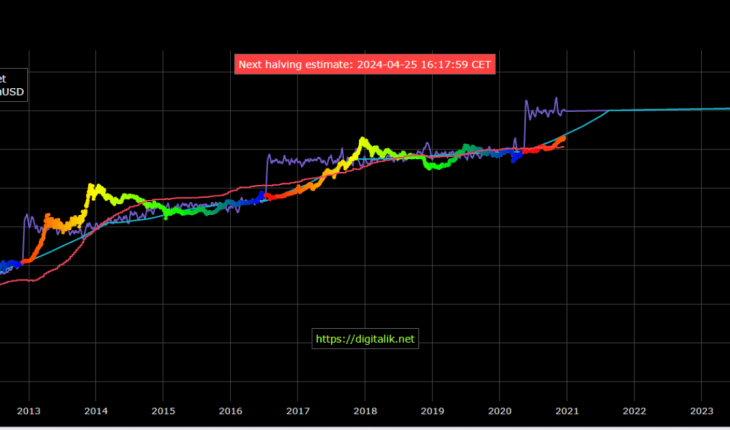It was only a matter of time before Bitcoin (BTC), the oldest and most popular cryptocurrency, broke the $19,800 per unit limit. At 11am Argentina time, Bitcoin overcamed the $20,000 psychological barrier and at the time of publication of this note, its price is around $20,800.When many analysts expected a correction towards values close to $14,000 or even $12,400 per unit, the cryptocurrency maintained its consolidation process at a price that ranged from $18,000 to $19.000.Es likely that the reasons why Bitcoin has not corrected were based on the constant revelation during the last few weeks of large economic groups buying immense amounts of the cryptoactive, some of them even selling their reserves in Gold, in order to access the BTC. Bitcoin’s resilience comes amid new bad news from central banks. In Europe, the European Central Bank (ECB) revealed that inflation in the eurozone had fallen into negative territory for the first time since 2016. This, as market analyst Holger Zschaepitz pointed out, occurs despite the ECB’s huge liquidity momentum. The net result of more money has been deflation. The US treasury has issued only 30% of its historical circulation in 2020, causing significant currency degradation while making the dollar much less efficient as a global capital preservation currency. It is always risky to buy an asset or stock when its price is close to its historic ceiling, given the risk of corrections of even up to 40%, to which the BTC has not been alien throughout its history. The fact that these companies and millionaires are entering these values reinforces the bullish sentiment of the market and the feeling that this is the beginning of an exponential run that will take place during 2021, where some models anticipate that it can reach US$100,000 and $288,000. Other more conservative analysts estimate that the currency can reach $50,000 next year. Bitcoin Fundamentals
Bitcoin is the first “digital object” that cannot be copied, duplicated, hacked or counterfeited. These primary attributes give it its unique value. On the other hand, the fact that it is a scarce asset (there may never be more than 21,000,000 BTC) according to its programming, should cause its price to increase as its adoption increases and the circulation available on the market decreases. The BTC blockchain consists of blocks of 1MB of information that describe all transactions that take place over a certain period of time. Each block is generated approximately every 10 minutes. The Bicoin network has been generating blocks uninterrupted since its inception. The first of these, called genesis block, was generated on January 3, 2009 and the reward for miners for mining that block was approximately 50 BTC. Each subsequent block had the same reward, but every 210,000 blocks, there is an automatic event scheduled in the Bitcoin code called Halving, which halves the reward to miners thereafter. In other words, from block 210,000 onwards, the reward for mining a block is 25 BTC, which are distributed to miners. Because blocks are generated every 10 minutes, Halving events occur every 35,000 hours, or nearly 4 years. These events will continue to occur until the reward is 0 BTC. And since the value of Bitcoin can be represented by up to 8 decimal values, 33 Having events every 4 years give a total of 132 years. The last BTC will be mined in the year 2140. After this point, it will be impossible to create more. From that moment on, the currency will effectively become deflationary since no more BTC can be “printed”, and if some holders lose private keys (not unusual) and therefore access to their capital, the offer will be even lower. An estimated 4 million BTC had been lost by 2017. Stock to Flow
Stock to flow is defined as the relationship between production and the current available stock. This means that it takes 27 years of Bitcoin production at current levels to produce the current current current stock. This number is much smaller than that of Gold, but Bitcoin has something that gold does not, the Halvings we explained above and an unalterable maximum possible amount. This model has predicted with astonishing precision the evolution of the cryptocurrency through its first 10 years of life.
According to this model, the current halving cycle, which like the others lasts four years, should produce a focal point of Bitcoin’s price of $2$88, 000. By 2024 or 2025, it could be more than double. It is clear that by this time and given the institution support of global financial groups that are turning to this new industry, Bitcoin and cryptocurrencies ceased to be a dream of a handful of geeks and are becoming a legitimate means of cheressing and investing. The structural constraints and problems of the global financial system have created fertile ground where digital assets have become a serious investment strategy; and the trend indicates that far from peaks, it is in the midst of mass adoption and growth for years to come.
In this note:





